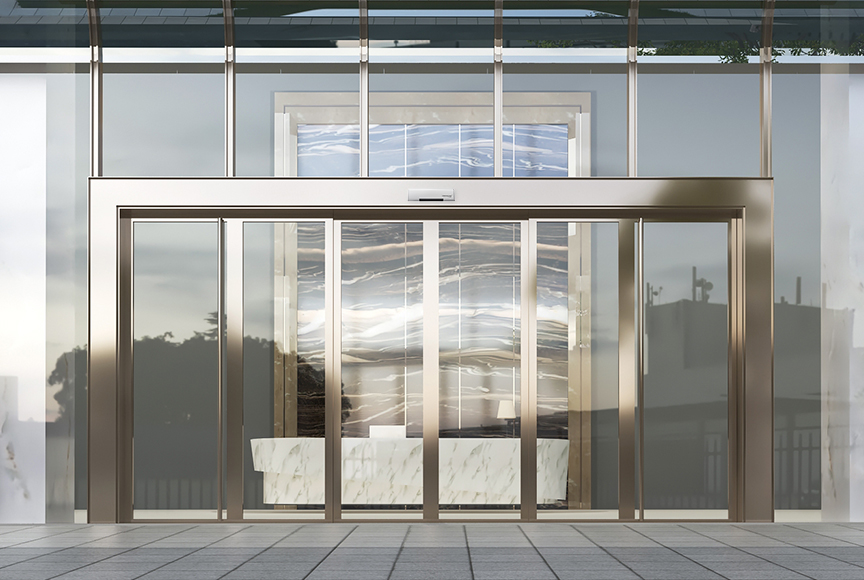What are the maintenance requirements for an OEM automatic sliding door sensor?
Automatic sliding door sensors are essential components in modern buildings, providing convenience, safety, and accessibility. These sensors play a crucial role in detecting motion and presence, facilitating smooth door operation while preventing accidents. To ensure the continued reliability and functionality of these sensors, proper maintenance is paramount. This article outlines the essential maintenance requirements for OEM automatic sliding door sensors, guiding facility managers and maintenance personnel in preserving the integrity of their door systems.

Regular Cleaning and Inspection
Routine cleaning and inspection are fundamental maintenance tasks for automatic sliding door sensors. Dust, dirt, and debris can accumulate on sensor surfaces, obstructing their functionality and reducing sensitivity. Regularly wipe down sensor lenses and housings with a soft, lint-free cloth dampened with mild detergent or a gentle cleaning solution. Avoid using abrasive materials or harsh chemicals, as these can damage sensor components. Additionally, inspect sensors for signs of physical damage, such as cracks or corrosion, and address any issues promptly to prevent further deterioration.
Adjustment and Calibration
Over time, environmental factors, wear and tear, or changes in building dynamics may necessitate adjustments to sensor settings or recalibration. Periodically review sensor sensitivity, detection range, and activation times to ensure optimal performance. Follow manufacturer guidelines for adjusting sensor parameters, using dedicated adjustment tools if provided. Calibration may involve fine-tuning sensitivity levels, adjusting detection angles, or resetting sensor thresholds to account for changes in ambient conditions or traffic patterns.
Verification of Alignment and Positioning
Proper sensor alignment and positioning are critical for accurate detection and reliable door operation. Verify that sensors are correctly aligned with the door's path of motion and positioned at the appropriate height and angle to detect pedestrians or obstacles effectively. Use alignment tools or templates provided by the manufacturer to ensure precise sensor placement. Periodically check for any misalignment or deviations from the recommended position, especially after maintenance or repairs to the door system.
Inspection of Wiring and Connections
Electrical connections and wiring integrity are essential aspects of sensor maintenance. Inspect wiring harnesses, connectors, and terminals for signs of damage, wear, or corrosion. Ensure that all connections are secure and free of debris or contamination. Any exposed wires or frayed insulation should be promptly repaired or replaced to prevent electrical faults or short circuits. Periodically perform electrical tests or continuity checks to verify the integrity of sensor circuits and connections.
Firmware Updates and Software Maintenance
For sensors equipped with electronic control units or programmable features, staying up-to-date with firmware updates and software maintenance is crucial. Manufacturers may release firmware updates to address performance enhancements, bug fixes, or security vulnerabilities. Follow manufacturer recommendations for firmware updates, ensuring compatibility with existing hardware and software configurations. Additionally, periodically review and adjust sensor settings using dedicated software interfaces to optimize functionality and adapt to changing environmental conditions or operational requirements.
Documentation and Record-Keeping
Maintaining comprehensive documentation and records of sensor maintenance activities is essential for tracking performance, identifying trends, and ensuring accountability. Keep detailed logs of cleaning schedules, inspections, adjustments, repairs, and firmware updates for each sensor unit. Document any observed issues, maintenance tasks performed, and corrective actions taken. This information serves as a valuable reference for troubleshooting, warranty claims, and future maintenance planning.
Conclusion
Proper maintenance of OEM automatic sliding door sensors is essential for preserving their reliability, longevity, and performance. By adhering to a proactive maintenance regimen encompassing cleaning, inspection, adjustment, calibration, wiring inspection, firmware updates, and documentation, facility managers can ensure that their automatic door systems operate smoothly and safely. Regular maintenance not only enhances sensor functionality but also minimizes downtime, reduces repair costs, and prolongs the lifespan of the entire door system, contributing to a safer and more efficient building environment.







